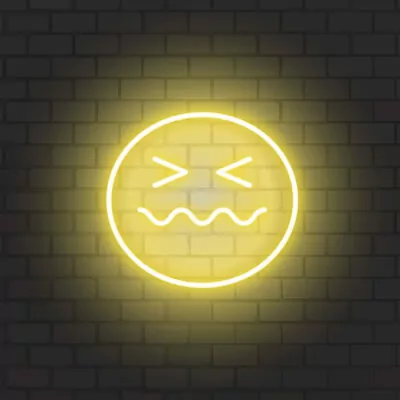
If you have been diagnosed with photophobia1 or feel you may have it, the most important thing you can do is talk to your doctor about what you’re experiencing. They can help you determine what could be causing your light sensitivity and recommend any medical treatments. With that done, there are several strategies you can use to reduce the impact light sensitivity has on your daily life. Many of these have to do with simply controlling your environment and having some tools available. Some helpful home remedies for photophobia include:
- When you’re outdoors, wear polarized sunglasses.
- A hat or cap can also provide shade for your eyes.
- Avoid the use of fluorescent lighting at home. Try replacing any fluorescent lights with incandescent bulbs or warm white LEDs.
- Bring in as much natural light as you can, which is usually less problematic for people with photophobia.
- Install dimmers to control indoor lighting.
- Adjust the settings on your TV, computer, phone and other devices to more comfortable hues and brightness levels.
- Do NOT wear sunglasses indoors. Though it might bring momentary relief, doing this over the long term can dark-adapt your eyes and actually make your photophobia worse.
- In addition to controlling your environment, try wearing specialized lenses like those made by Axon Optics to filter out the wavelengths of light most likely to cause you pain.
Using light-filtering lenses may be particularly useful for most people, since they provide a hassle-free way to control your exposure. Nor do they require complicated requests at work, or avoiding certain places due to the lighting they use. For many users, the lenses have provided some major relief.
If you have light sensitivity or photophobia, you’re not alone.
In fact, millions of people have light sensitivity. While many of us think of irrational fears when we hear the word “phobia,” that isn’t the case here. Photophobia is a medical condition where bright lights or certain types of light literally cause pain. And that’s the part that might spark a little fear in the hearts of those who have it.
Take Maya for example. This Chicago native had meningitis 25 years ago that caused migraines. The migraines “were gradually subsiding until they were massively retriggered a few months ago,” she says.
“That made it an ordeal to be outside on a sunny day and even worse to be out once headlights and streetlights came on. Fluorescent lighting became intolerable. Even my home became a minefield, from the too-bright kitchen ceiling light to the monitor and phone screens (despite blue-light filters).”
When it comes to photophobia, we’re not just talking about letting your eyes adjust, like when you walk into the kitchen to make your morning coffee and turn on the light. We’re talking about potentially debilitating pain2. And while the discomfort of photophobia causes many sufferers to want to retreat into the dark and avoid bright lights altogether, the home remedies for photophobia mentioned above can help reduce your symptoms while you go about your usual business.
What Causes Light Sensitivity?
It’s pretty common knowledge that light is transmitted from your eyes to your brain along certain nerve pathways. What you may not know is that there’s another pathway that transmits pain signals. For most of us this pathway performs the critical job of protecting the photoreceptors in our eyes from damage. This is why when we look at a light bulb or try to look at the sun, it hurts and makes us want to stop. But when you have photophobia, this pathway is overly sensitive and may cause pain under lighting conditions that anyone else would consider normal.
Dr. Bradley J. Katz is a professor and neuro-ophthalmologist at the University of Utah Medical Center. One of his specialties is treating patients with photophobia. According to Dr. Katz, causes of light sensitive vision (photophobia) may include:
- Acute inflammation in the eye (iritis or uveitis)
- Contact lens irritations or poor fit
- Corneal abrasion or ulcer
- Eye injury, disease or infection (such as glaucoma)
- Eye surgery or eye exams where dilating eye drops are used
- Medications; photophobia (or light sensitive vision) is a potential side effect of some treatments
- Meningitis
Recent Studies in How the Eye Responds to Bright Light
For many years, researchers and ophthalmologists have known that specific sets of cells, called rods and cones, play a role in the eye’s ability to detect light and color. For example, under bright lights, your eye’s cones are what mediates colors. When it’s dark, the rods are what help you to find your way. Without rods and cones, we wouldn’t be able to see light and color.
But within the last two decades, newer research has found that rods and cones aren’t the only cells capable of sensing light and seeing color. Between 1999 and 2002, researchers at Brown University and Johns Hopkins University found that there is a small subset of cells in the human eye called retinal ganglion cells3 (RGCs). These RGCs express melanopsin; a light-sensitive photopigment and retinal protein. Researchers discovered that melanopsin plays a big role in how your pupil reacts when exposed to bright light.
To be more specific, melanopsin contributes to how the pupil expands and contracts under different lighting conditions. If your melanopsin system doesn’t function properly, this malfunction may contribute to sensing too much or too little light, and is related to conditions such as seasonal affective disorder, insomnia, and vestibular disorders like migraine.
Photophobia and Vestibular Disorders
Whether you’re watching a movie, working in an office, or shopping at a hardware store, photophobia can cause significant disruptions in your life and may have different effects on different people. From excessive tears, squinting or blinking to migraine headaches and nausea, the symptoms are wide-spread and definitely uncomfortable. And if you already have a vestibular disorder, photophobia could trigger symptoms or make them harder to deal with.
Many patients who have vestibular disorders are also light sensitive. Photophobia can exacerbate your condition and the vertigo, dizziness, and lightheadedness you’re already prone to. And as noted in many migraine studies, people with migraine overwhelmingly tend to be light sensitive4.
For example, more than 90% of people with vestibular migraine report that light causes pain or other adverse reactions like dizziness during a vestibular episode. For these people, the most troublesome light sources include fluorescent lighting, screens of digital devices, and outdoor sunlight and/or sunlight glare.
If you have Meniere’s Disease or have suffered a traumatic brain injury (a leading cause of vestibular problems) you may experience flare-ups triggered by bright, flickering, or fluorescent lighting, and by digital screens such as computers or TV.
Begin to Heal
Remember Maya with meningitis? She says, “Wearing these glasses immediately made an enormous difference. Not only did they stop the near constant migraine pain, they also protected me from being constantly retriggered, so my nervous system could calm down and begin to heal.”
If you have vestibular challenges like Maya and feel light may be a trigger for you, speak to your doctor about your condition. Along with getting the medical attention you need for your condition, these simple home remedies for photophobia methods may reduce your symptoms and help you go about your day with less discomfort.
 NO MORE GLARE
NO MORE GLARE